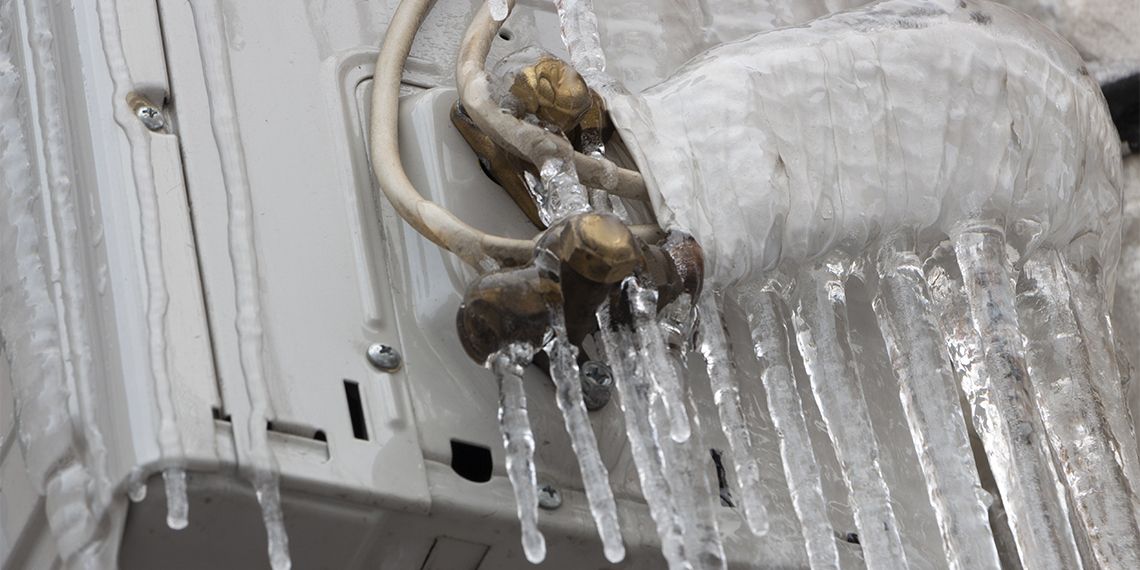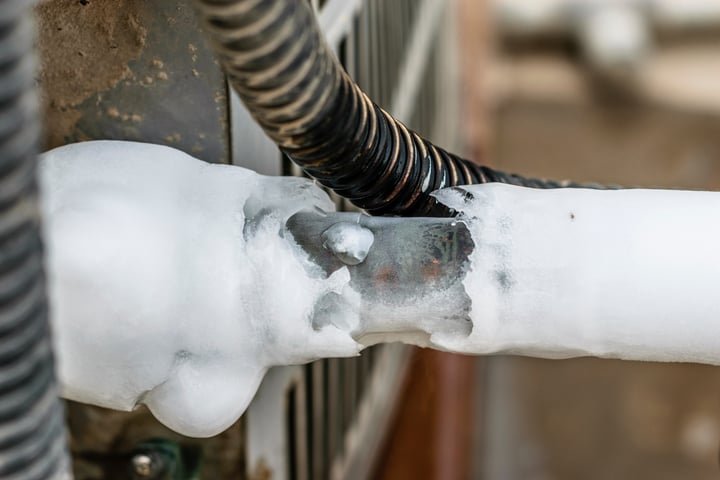They are making several good pointers relating to Air Conditioner Frozen? How To Fix your Frozen AC Line as a whole in this content down the page.

Introduction
Discovering that your AC pipeline is iced up can be concerning, especially throughout warm summer season when you rely on your air conditioning unit the most. Recognizing what to do in such a circumstance is essential to prevent more damage to your air conditioning system and guarantee your comfort inside.
Comprehending the Causes
Several variables can add to the cold of an air conditioning pipe. Recognizing these reasons can help you address the concern efficiently.
Lack of Airflow
One usual reason for a frozen a/c pipe is inadequate air movement. When the airflow over the evaporator coil is limited, it can trigger the coil to drop below freezing temperature level, causing ice formation on the pipeline.
Low Refrigerant Levels
Not enough refrigerant degrees in your air conditioning system can additionally lead to an icy pipe. Reduced refrigerant degrees can cause the pressure in the system to go down, resulting in the cold of wetness on the evaporator coil.
Winter Conditions
In colder environments, freezing temperatures outside can add to the freezing of air conditioning pipelines. If your air conditioning system is not properly protected or if there are leakages in the ductwork, chilly air can penetrate the system, causing the pipe to ice up.
Dirty Air Filters
Dirty or stopped up air filters can limit airflow in your air conditioning system, bring about various problems, consisting of an icy pipe. It's important to change or cleanse your air filters consistently to ensure appropriate air flow and protect against ice buildup.
Indications of a Frozen A/c Pipe
Recognizing the signs of a frozen air conditioner pipe is vital for timely activity.
Decreased Airflow
If you notice a significant reduction in airflow from your vents, it could show a frozen pipeline.
Ice Buildup on the Pipe
Visible ice build-up on the refrigerant line or the evaporator coil is a clear sign of a frozen air conditioner pipe.
Odd Sounds from the Unit
Uncommon sounds, such as hissing or bubbling, originating from your a/c device can signal that there's ice present on the pipe.
Immediate Actions to Take
When confronted with an icy air conditioning pipe, it's essential to act rapidly to stop further damage to your cooling system.
Switching off the AC
The primary step is to turn off your air conditioning unit to prevent the system from running and exacerbating the issue.
Checking for Blockages
Inspect the area around the indoor unit for any kind of obstructions that might be blocking airflow, such as furniture or curtains.
Thawing the Pipe
You can make use of mild techniques like placing towels taken in cozy water around the frozen pipeline to assist thaw it gradually.
Safety nets
Taking safety nets can aid prevent future incidents of a frozen air conditioner pipeline.
Routine Maintenance Checks
Schedule normal upkeep talk to an expert HVAC professional to make certain that your air conditioner system is running efficiently.
Altering Air Filters
Routinely replace or clean your air filters to avoid airflow limitations and maintain optimal performance.
Shielding Exposed Pipes
If your air conditioning pipelines are subjected to cool temperature levels, take into consideration shielding them to avoid freezing during winter season.
Looking For Professional Help
If DIY approaches fall short to solve the problem or if you're unclear regarding just how to continue, it's ideal to look for help from a certified HVAC technician.
When DIY Methods Fail
If your efforts to thaw the pipe or address various other concerns are unsuccessful, it's time to employ a professional.
Value of Hiring a Professional HVAC Technician
A certified HVAC specialist has the expertise and tools essential to detect and repair problems with your a/c system safely and successfully.
Conclusion
Handling an icy air conditioning pipeline can be a frustrating experience, but recognizing exactly how to react can aid minimize damage and bring back comfort to your home. By understanding the causes, acknowledging the signs, and taking prompt activity, you can properly resolve the issue and avoid future occurrences.
Frozen AC Line: Why It Happens & What To Do About It
A frozen AC line can be a rather peculiar sight in a place like Phoenix, Arizona where nothing ever freezes. In this post, we’ll discuss what makes an air conditioner line frozen – and what you can do about it.
Dirty Air Filters
Did you know that you should be cleaning or replacing your air filters on a monthly basis? Failing to do this can result in airflow issues that, in turn, cause your evaporator coils and lines to freeze over. You’ll notice a buildup of ice on both components, although the buildup on your pipes will, of course, be more evident unless you open your air condition up to reveal the coils.
What To Do About It
Give your air filter a good cleaning if it’s reusable. If not, replace the filter outright. Next, switch your air conditioner’s fan setting on and leave it there for 2-3 hours. This will draw warm air in, helping to thaw your evaporator coil. You can also check out this article for some tips on cleaning the coils themselves if you’d like to speed the process up. Before you switch the unit back to its normal state, make sure the supply vents are completely unobstructed and free of dust or other debris.
If you keep having this issue even after replacing your filters regularly, contact a local HVAC repair company and have them inspect your evaporator coil, ductwork, and any other components that may be at fault. If you live in the Phoenix, Arizona area, give American Home Water and Air a call.
Low Refrigerant Levels/Leakage
What To Do About It
Contrary to what air conditioner “recharge” companies often tell their clients about refrigerant, it should never need to be simply refilled. You see, refrigerant runs in what experts refer to as a “closed loop.” Refrigerant really shouldn’t be leaving that loop. If it is, you’ve got a leak.
Paying someone to come and pump more refrigerant into your system (aka “recharge” it) isn’t the solution. Doing that will simply kick the can down the road. Besides, refrigerant leaks can be harmful to the environment and people in your home.
Rather, you need to take care of the leak with the help of a technician. Check out this article for some more information about dealing with air conditioners that are leaking refrigerant. Before you contact a technician, switch your thermostat to the off position. Then, switch the fan setting on and let it run for 2-3 hours so the unit can thaw.
Improper Temperature Setting
Improper temperature settings can also cause a drop in your air conditioner’s pressure. What many people don’t realize is that air conditioners are actually designed to run when temperatures have fallen above roughly 60 degrees Fahrenheit. If you run the unit when it’s cold outside, you’ll run into many issues, including frozen components.

Hopefully you enjoyed reading our piece about Have a Frozen AC Line? Here’s How to Fix It. Thanks a lot for spending some time to read our posting. Do you know somebody else who is truly interested in the topic? Do not hesitate to promote it. Thanks a lot for taking the time to read it.
Schedule A Free Estimate
Comments on “Handling a Frozen AC Pipe - Guidance for Addressing the Issue”